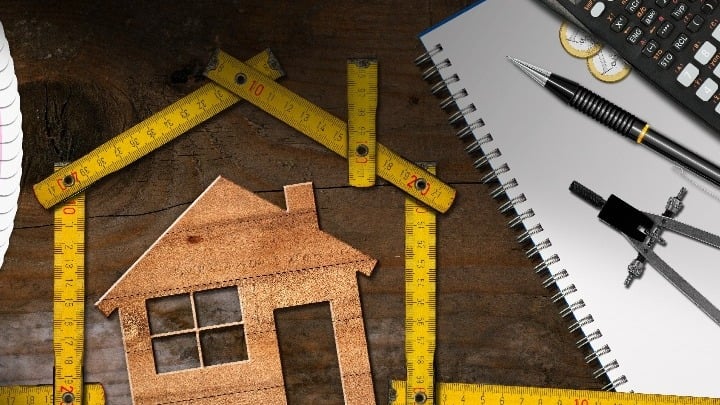9 Things to Do Before Closing on a House [VIDEO]
Closing on your first home can feel overwhelming, but it doesn't have to be. Whether you're working with a traditional lender or exploring programs...
3 min read
 Twin Cities Habitat for Humanity
:
8:15 AM on August 24, 2025
Twin Cities Habitat for Humanity
:
8:15 AM on August 24, 2025

The house seemed spacious during the walkthrough. That was before three generations started living in it.
What looked like a comfortable three-bedroom home suddenly feels tight when you factor in everyone's needs: work-from-home spaces, play areas, storage for multiple generations' belongings, and quiet spaces for family members who need them.
You're not alone in this reality check. Many families discover their starter home requires creative thinking to accommodate everyone comfortably, from toddlers to grandparents.
But with some smart planning and strategic changes, your smaller space can work beautifully for you and your big family.
That disappointment you feel when comparing your new home to your dream home is completely normal. But remember that you’re not settling.
Your starter home represents a smart financial decision that builds equity while you learn exactly what your family needs. Every multi-generational family that's grown in a smaller space has discovered something important: limitations spark creativity and bring families closer together.
Your current home can serve as your family's training ground. You'll master organization, learn which spaces matter most to daily routines, and build systems that respect everyone.
Small spaces work when every area serves multiple purposes and different generations throughout the day. Start by figuring out your family's daily routines and design around that.
Make rooms work harder. Use area rugs and furniture to create permanent zones in your living room. A quiet corner for reading, an open area for play, and a table space for homework. One room handles multiple activities.
Build up, not out. Add floating shelves above doorways. Use tall bookcases to divide spaces—they create separation between quiet reading spots and play areas while adding storage. Hang organizers on door backs for shoes, supplies, and daily essentials.
Turn forgotten spaces into favorites. Basements become quiet retreats during busy dinner prep, then transform into art stations on weekends. Organized garages store everything from mobility equipment to sports gear.
Bring the indoors out. Patios and yards become extra rooms when weather allows. Create comfortable seating where grandparents can relax while kids play nearby. Even small balconies work as morning coffee spots or evening retreats.
You don't need major renovations to change how your home feels and functions. Many of these updates can be completed on a weekend timeline with budget-friendly DIY approaches.
Paint with purpose. Light colors make rooms feel larger and help everyone see better. Use different colors to define areas—calming blues for quiet spaces, energetic yellows for play areas. Paint shelves the same color as walls to reduce visual clutter.
Light up every corner. Add lamps to eliminate dark spots.Under-cabinet lighting brightens kitchens for everyone. String lights create cozy kids' spaces without disturbing nearby sleepers.
Arrange for easy movement. Keep clear pathways while creating conversation areas. Use storage ottomans that work as seating, tables, and toy boxes all in one.
Give everything a home. Use drawer dividers and clear containers. Keep frequently used items at the right height for each user (for example, medicines up high, toys down low). Use any available space you can find—under stairs, at different heights. Try creative storage solutions that work for everyone, and check out local ReStore locations for affordable organizers and room dividers.
Living with multiple generations teaches you what really works for your family.
You'll learn what each generation actually needs. That formal dining room might become everyone's favorite homework and puzzle space. The living room you planned for TV watching might work better as a flexible area that shifts from quiet reading to active play.
You'll build equity and stronger relationships. Every mortgage payment increases your home ownership while your family learns to live together. This equity helps you buy your next home when you're ready.
You'll create systems that work anywhere. The organization strategies you develop will help in any future home. Kids learn responsibility, and everyone learns to respect shared spaces.
You'll know your community from different angles. Each generation discovers what they value in your neighborhood. This knowledge helps you make smart decisions about your next move, especially in changing market conditions.
Your starter home isn't too small. It's teaching your family how to live well together. The creative solutions you discover today will serve you for years to come.
Remember, a happy home has nothing to do with square footage—and everything to do with the people inside it.
Your gift unlocks bright futures! Donate now to create, preserve, and promote affordable homeownership in the Twin Cities.
![9 Things to Do Before Closing on a House [VIDEO]](https://www.tchabitat.org/hubfs/2023%20Blog%20Images/September%202023%20Blog%20Images/closing-on-home.jpg)
Closing on your first home can feel overwhelming, but it doesn't have to be. Whether you're working with a traditional lender or exploring programs...

When you settle into your new home after closing day, a whole new journey begins. You’ll have the chance to turn your property into a true home....

You might be thinking: "Homeownership? Me? Right now?" When you're already stretching every dollar and minute as a single parent, adding a mortgage...